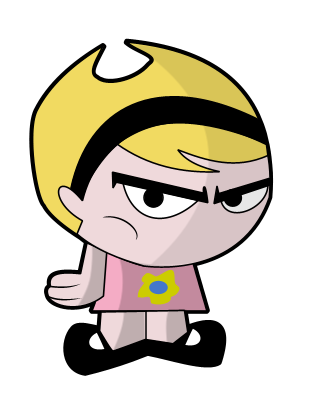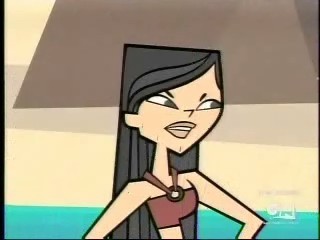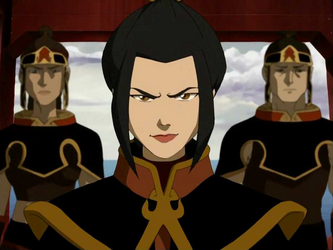In Animation, mostly if not all lead characters are “strong” men who go save the damsel in distress. The damsel in distress is represented as perfect standard of beauty, and their only dimension to their personality is being nice and thankful for being saved. We see this in movies, mainly from Disney like Cinderella, Snow White, Sleeping Beauty, etc. But, where are the womxn characters who are dynamic? Who are multi-facted and are more than just a pretty face and hot body. As a Filipino-Italian womxn, I have my own stories to tell. I know I am a talented, strong, funny, ambitious, cultural, loud woman. But, where is that side of me and other girls like me represented on the screen? For too long, we have had a one sided narrative of a strong cis white male saving the day. But, I want more than just flipping that narrative for womxn, I want animation to show other sides, perspectives, and stories of women. Stories should be shown of women even with negative feelings because that is what’s real. We are not just always happy, nice, pretty beings. We are dynamic and powerful; which should be demonstrated on screen to many other girls growing up and older women watching too. In this post, I wanted to shed light on some of my favorite womxn characters that are dynamic and challenge the norm in animation.
Mandy

Mandy, from Grim Adventures of Billy and Mandy, is a 9 year old girl from Endsville. She is very intelligent, sarcastic, devious, and quiet. She is very opposite from her best friend, Billy who is very dumb, loud, happy, and talkative. She is known to never smile, and when she does it throws off the natural order of the universe. She is an anti-hero and at times an antagonist. She can be very stubborn, unsympathetic and has a superiority complex. Mandy aspires to dominate the world and rule it cold heartedly with her intelligence and intimidation.
Mandy is a very different take on what we usually see as a little girl. She isn’t particularly designed to have a pretty face such as Disney girls. She is represented in a normal pink dress and headband like a normal young girl would wear. But, her hair is curved liked horns implying her deviousness. She is a great representation of what an average young girl would look like, but with a different take on her personality. Young girls are often represented as sweet, innocent, and cute. But, Mandy is anything but and would hate to ever be associated with any of those terms which makes her a great unique character.
Heather

Heather, from Total Drama Island, is an Asian-Canadian young adult who is the antagonist of the series. She is extremely manipulative of anyone in order to try to win the show. She knows what she wants and how to get it. She will only be kind when it benefits her. She is not a team player and is a control freak. Heather could be very rude and employs many mean girl tactics to get her way.
What Heather represents to me is one of my first representations of an Asian womxn who looked liked kind of like me. She wasn’t at all any of the usual asian womxn stereotypes. She was loud, mean, ruthless, and manipulative. She was attractive and at the top of the chain which wasn’t common in animation at all. An attractive asian womxn villain was not a thing, and her character serves as a showcase of successful asian representation without stereotypes.
Azula

Azula, from Avatar the Last Airbender, is the princess of the Fire Nation and key adversary of Team Avatar, which was in charge of hunting Avatar Aang and her brother, Zuko. Azula is a prodigy at Firebending and a skilled strategist. She is confident, sadistic, narcissistic, and a perfectionist. She does not have empathy, and was very hostile. She has a one track mentality and has extreme composure and focus making her very cunning and perceptive. Although she was intelligent and talented, she harbored a fragile mentality because she believed her mother loved her brother, Zuko, more than her and thought she saw her as a monster. Living in an environment where she received no affection from parental figures, her will strove her for perfection and maintaining relationships through cruelty and fear.
Azula is a great representation of a character who was given a multi-facted story that explained why the way she was. She was given a narrative where she was strong, talented, and powerful yet the deeper aspects of her personal life hindered her success in relationships and for the throne. Azula was often seen as this cruel, power obsessed girl who’d do anything to win, but there were moments where she broke down, where you can see her be heartfelt, or a normal teenage girl. Azula for me was my first animated character who I saw a girl as strong, with crazy abilities, and had layers to her.
Why is this occuring?
In Animation, a huge problem is making the female characters sexualized and a separate entity as a narrow role. Lino Di Salvo, the head animator of Frozen, even said himself, “Historically speaking, animating female characters are really, really difficult, because they have to go through these range of emotions, but they’re very, very — you have to keep them pretty… So, having a film with two hero female characters was really tough.” This statement is very telling of what the current perspective character designers in the animation industry have of the need for female characters to be pretty and that there is one standard of beauty in the industry. This limits the designs and concepts of female characters due to pressure from marketing where the decisions are dictated by mostly men who have the most say. And due to scarcity of female leads, no one notices the one formula of beauty for female characters and the lack of willingness to attempt to make something different. The need for female characters to be beautiful was very apparent in early 90s and 2000s shows where the male gaze was apart of even more “feminist” shows like Powerpuff Girls and My Life as a Teenage Robot. In Powerpuff Girls, to offset their female anger the designs and aesthetic would be hyper-feminine and pretty like bright backgrounds, or ultra pretty representations of their abilities. In My Life as a Teenage Robot, Jenny struggles with being beautiful or being a strong super-hero. Should she wear a pretty human girl exo skin or be herself? This dilemma illustrates the message that women can’t be both.
Although many animated shows and films have included womxn, they are often one-sided, forgettable, and are one standard of beauty. By providing diversity within a department where more female artists can dictate new perspectives and ideas of the female narrative and look. There can be new concepts and fresh looks to the industry that many kinds of people are wanting to see. It is very important to show complex personalities, cool character arcs, relevancy on their own, and diverse looks because without that it disempowers females and sends the message that we can’t and aren’t able to have those things.
Sources:
https://dotandline.net/sexism-in-cartoon-women-554b37de01f9
